Another Radical Move as Fedora Now Wants to Drop UEFI Boot Support on MBR
UEFI boot support for MBR could be removed in Fedora 43.
Archcraft is an impressive distro with a customized out-of-the-box experience.


We bid goodbye to 2023, a year filled with exciting distro and app releases. Even AI took the world by storm, with big tech scampering to get a piece of the coveted pie.
Nevertheless, we must now look ahead. 😃
We kick this year off with an interesting Arch-based Linux distribution called “Archcraft” that claims to be “just another Linux distribution” but can run with only 500 MB of RAM.
So, let's dive in and see what it has to offer.
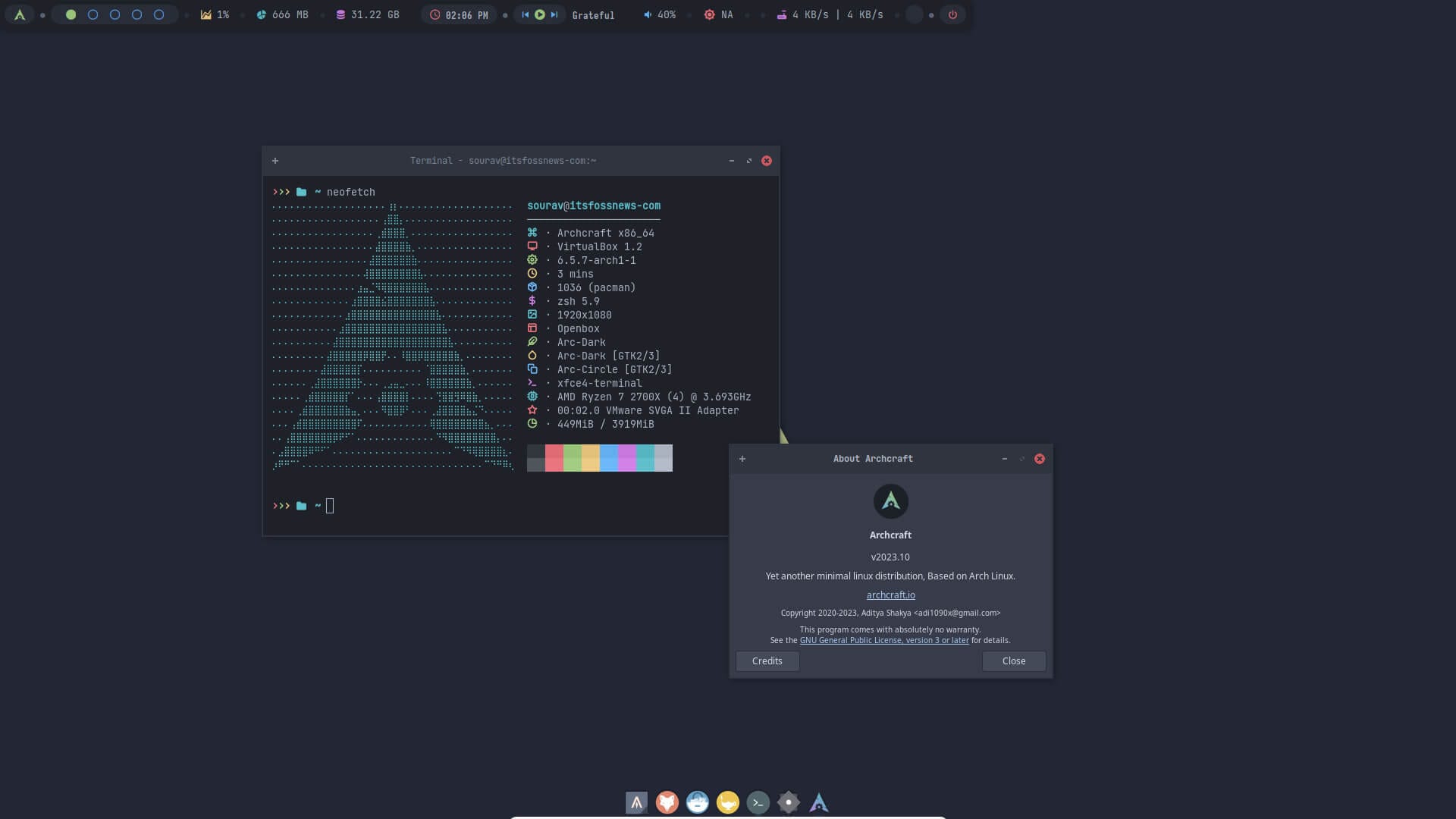
Being a lightweight Linux distribution, Archcraft has been built using Arch Linux as its base to provide users with a straight-to-the-point distro experience that doesn't need much configuring.
Most things are pre-configured, the user just has to install it and get on with whatever they want to do with their system. This has been made possible thanks to the following key features of Archcraft:

Suggested Read 📖

To get started with Archcraft, I loaded it up on a Virtual Machine by using VirtualBox, which was able to detect that it was an Arch Linux (64-bit) operating system right away.
After it booted, a welcome app showed up with options to access the user guide or run the installation, by using one of the two installer options with Archcraft.
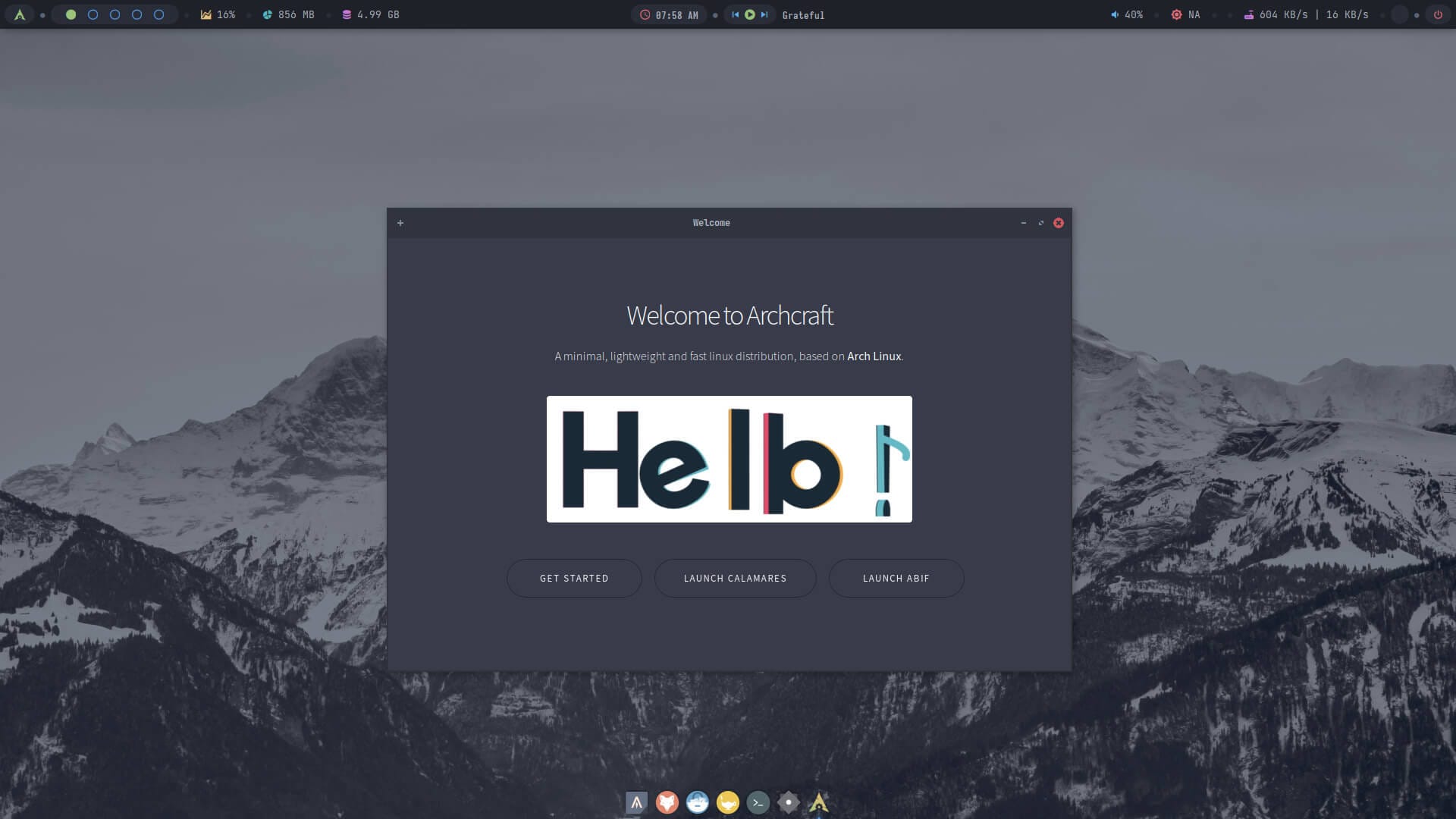
One was the conventional Calamares installer that we all know and love, the other was ABIF (Arch Base Installation Framework), which is a command line-based installer that is recommended for more advanced users.
I went about installing it using Calamares, and at some point I was shown a menu to pick the window manager. I went with “Both”, which would then install Openbox and bspwm.
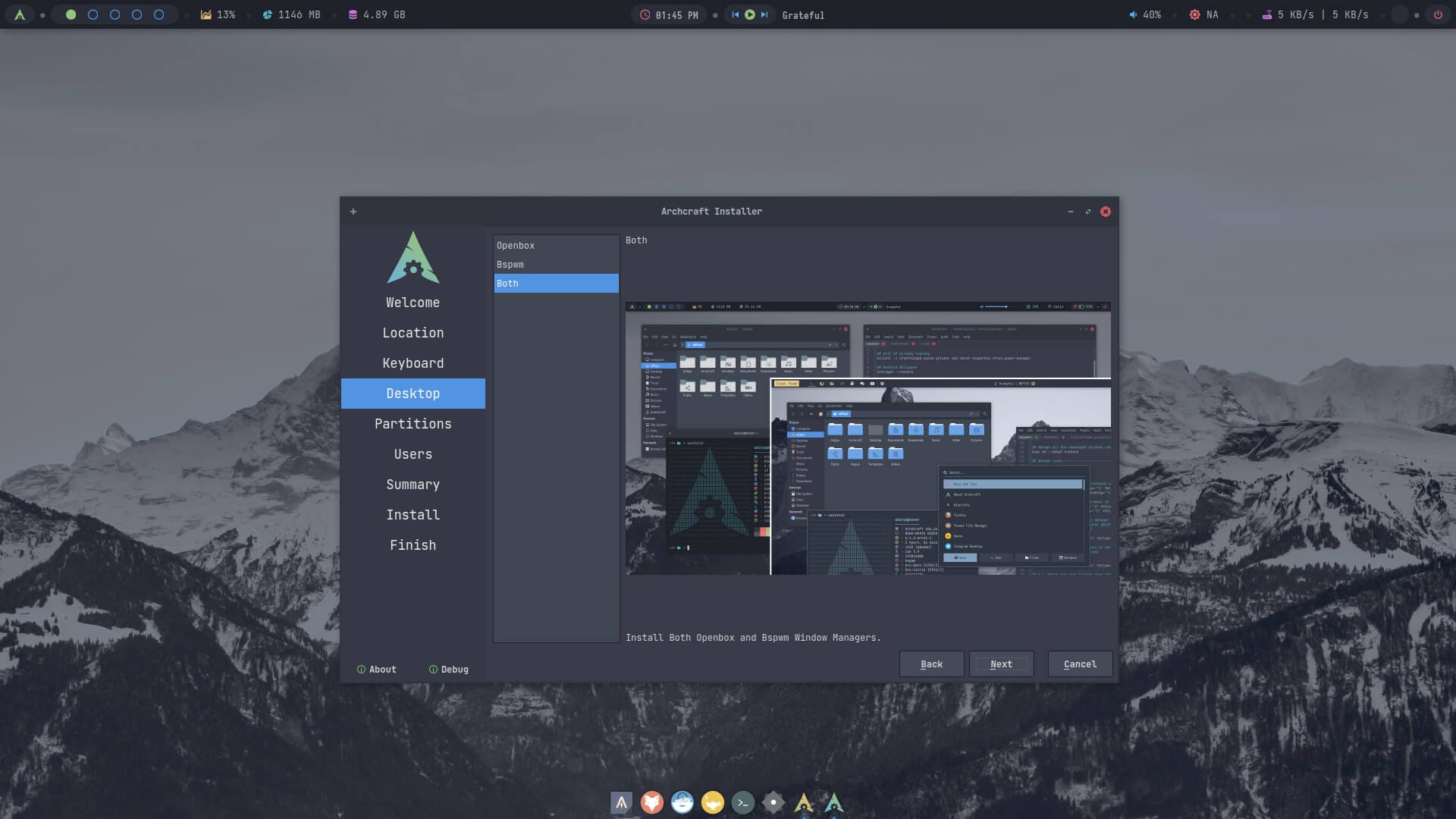
The installation went smoothly, and I was able to boot into Archcraft without any issues. I then began to explore it.
As you can see below, the desktop screen is extremely minimal with a status bar at the top, and a handy dock at the bottom to launch apps with.
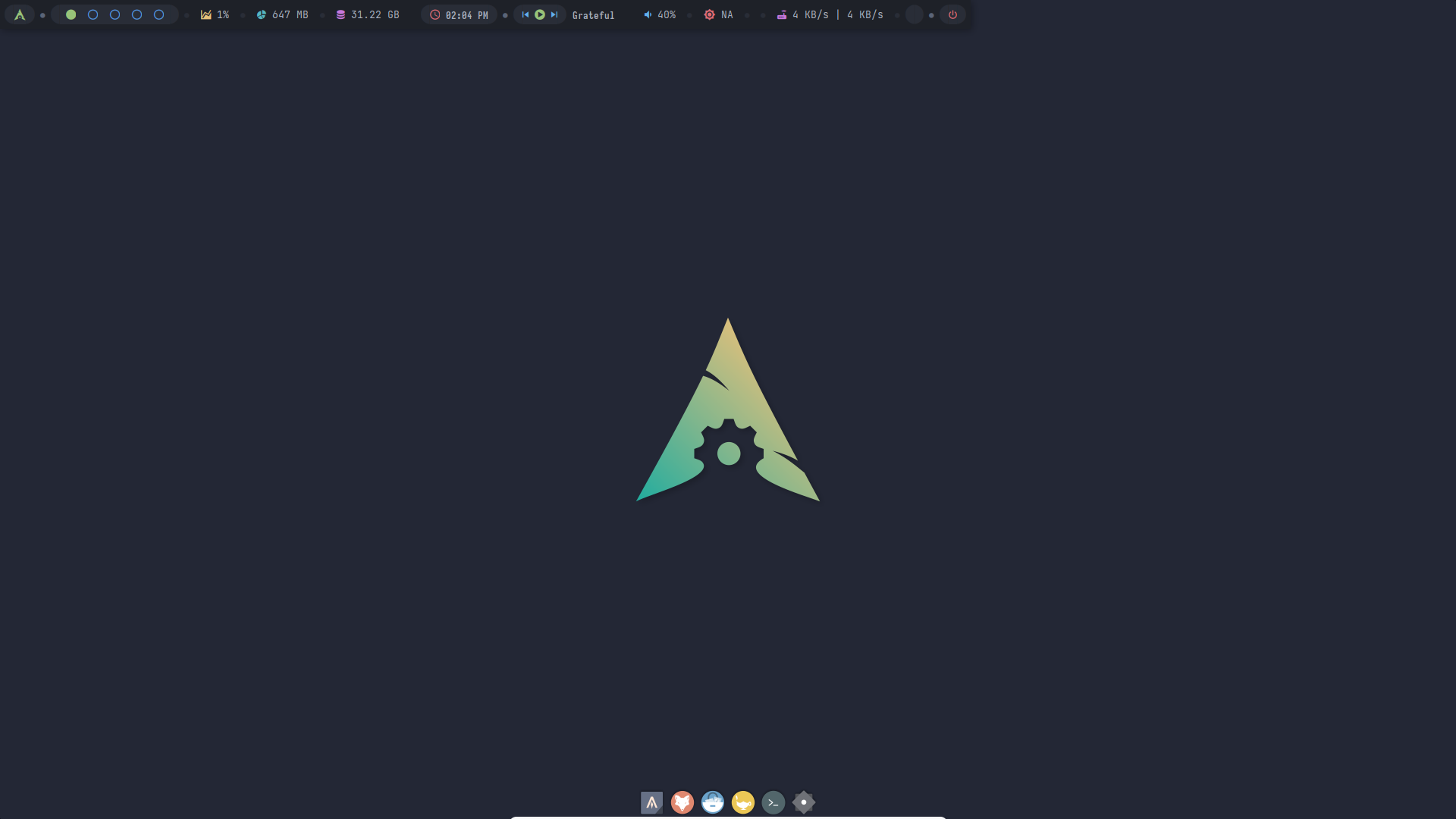
The status bar has some really neat options too; from left to right, you will find the application launcher with the Archcraft logo, a workspace switcher, some system usage info, the time/date, music player controls, volume slider, network usage info, and power buttons.

When I clicked on the system usage info, I was shown Alacritty, one of the top terminal emulators for Linux, which showed me all the active processes, and what kind of resources they were using up.
Suggested Read 📖

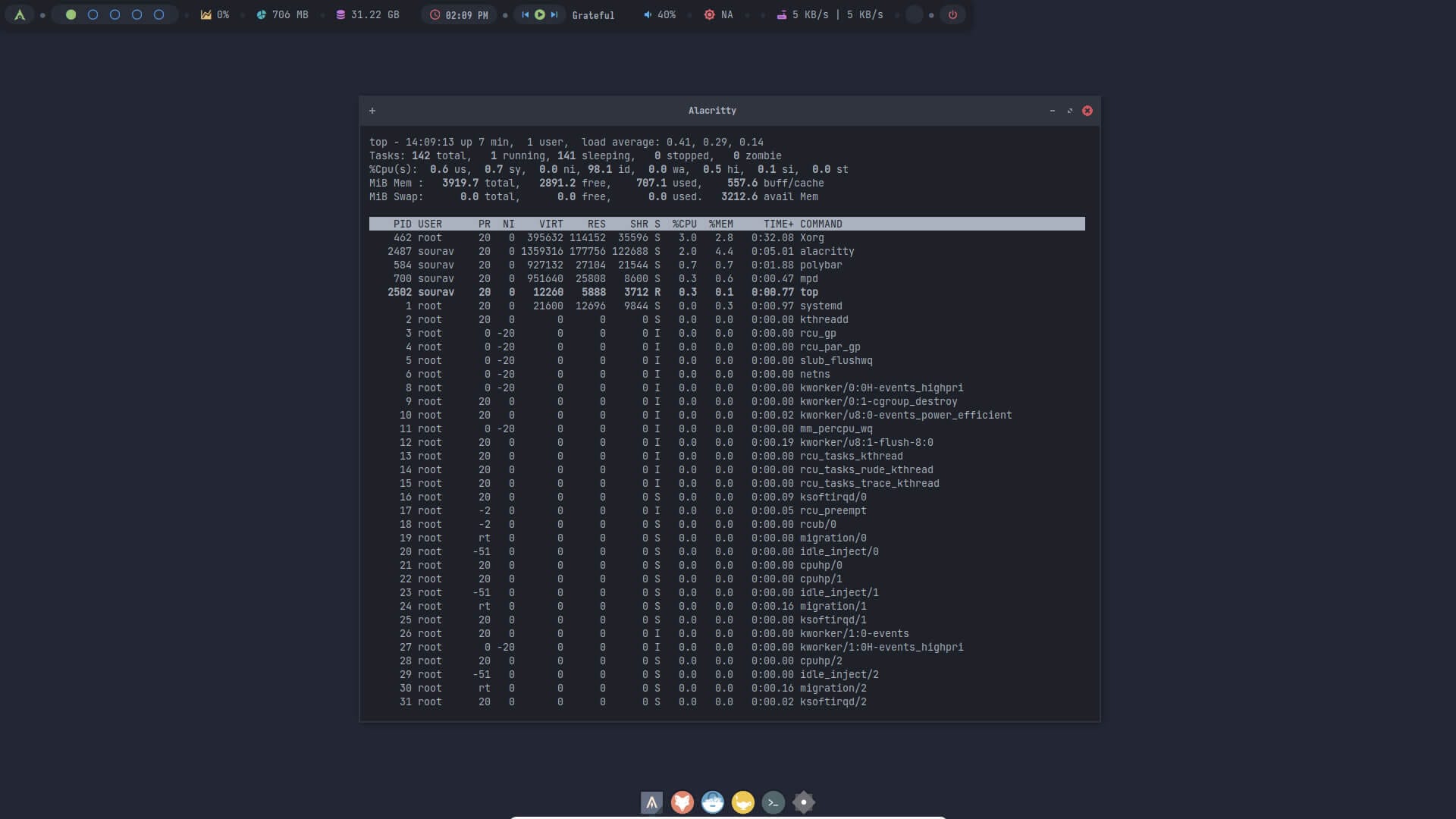
I then moved over to check out the pre-installed wallpapers on Archcraft, and, to my surprise, Rick giving me the good ol' finger.
I must say, I had a nice giggle over this. I now know what Morty feels like. 😂
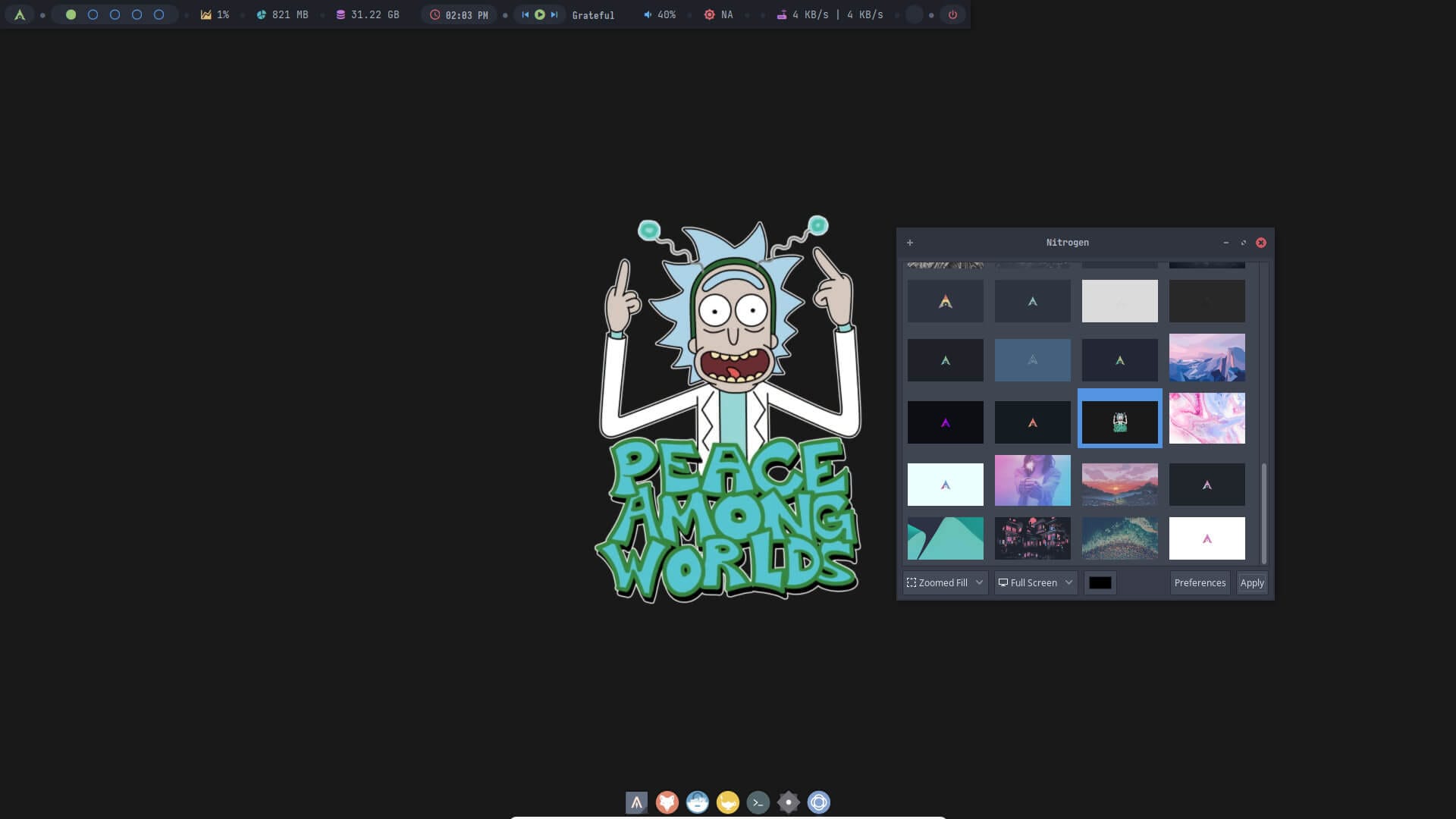
I then checked out the app launcher, which was loaded quite well with useful apps. It was impressive to see this in such a minimal distro.

I could also search for commands and even browse files in different directories.
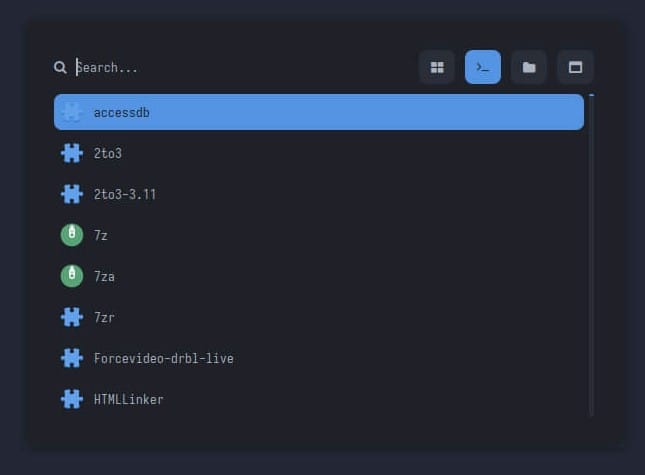
The settings app was easy to use and had all the important options in one place. What more could you want?
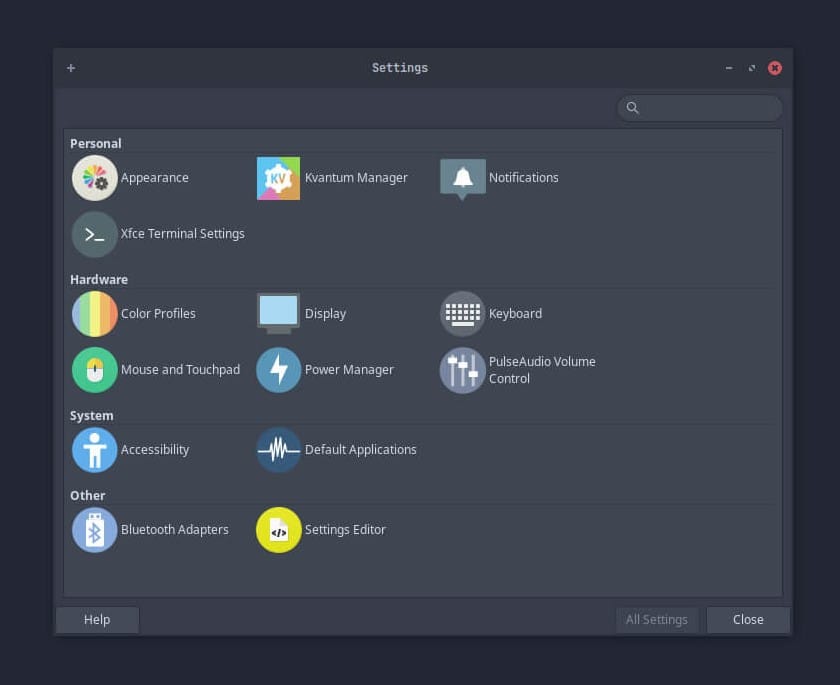
So, to conclude this first look, I would say that Archcraft is a very user-friendly Arch-based distribution that is straightforward to get into. This should age like fine wine as development progresses.
Should you choose to, you could also contribute to the development of Archcraft by visiting its GitHub repo.
Suggested Read 📖

It is being offered in two othrr flavors, “Archcraft XFCE” and “Archcraft LXDE” along with its flagship edition with openbox/bspwm. Explore them on its official website.
You can also refer to the official wiki for more information on Archcraft.
💬 Do you think this is a viable option for people who want to try Arch Linux?
Stay updated with relevant Linux news, discover new open source apps, follow distro releases and read opinions